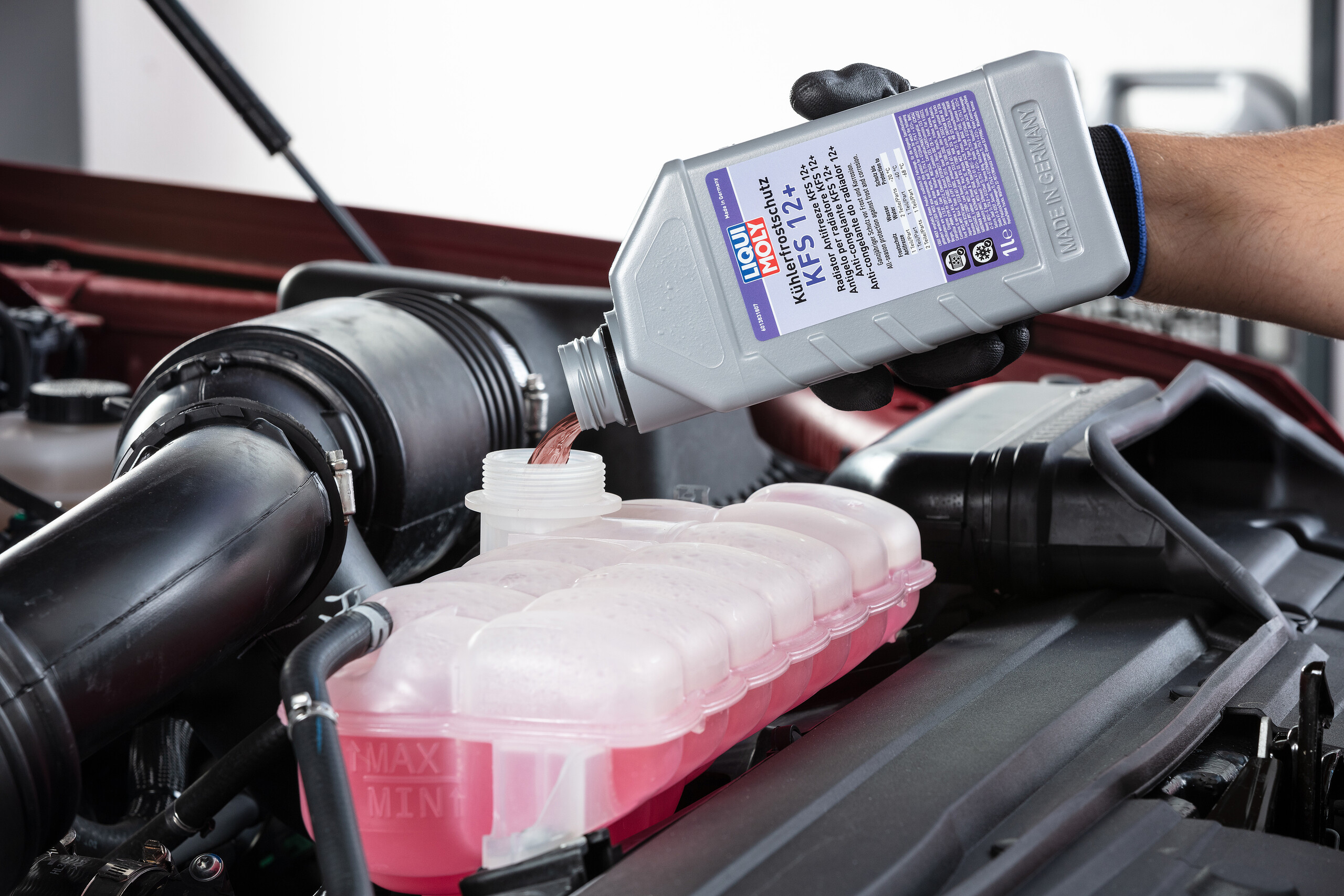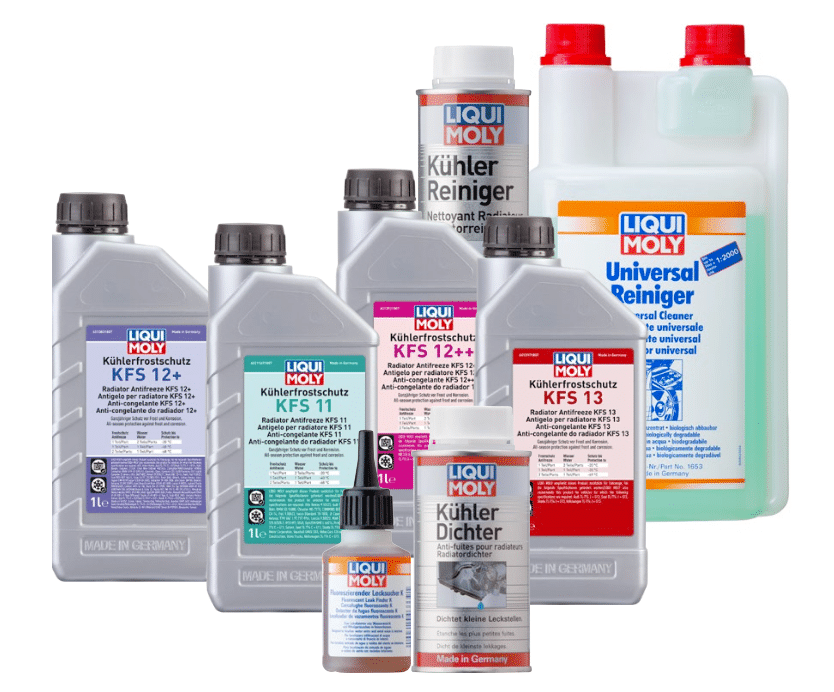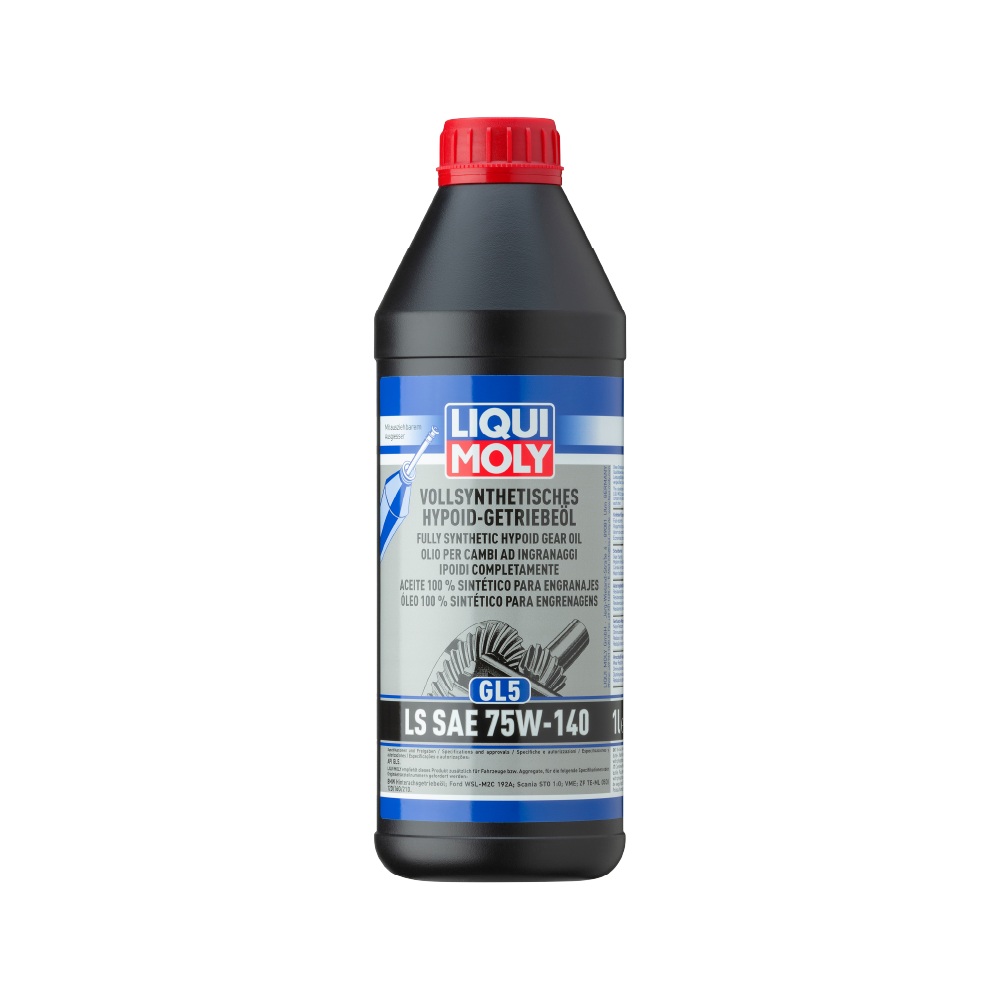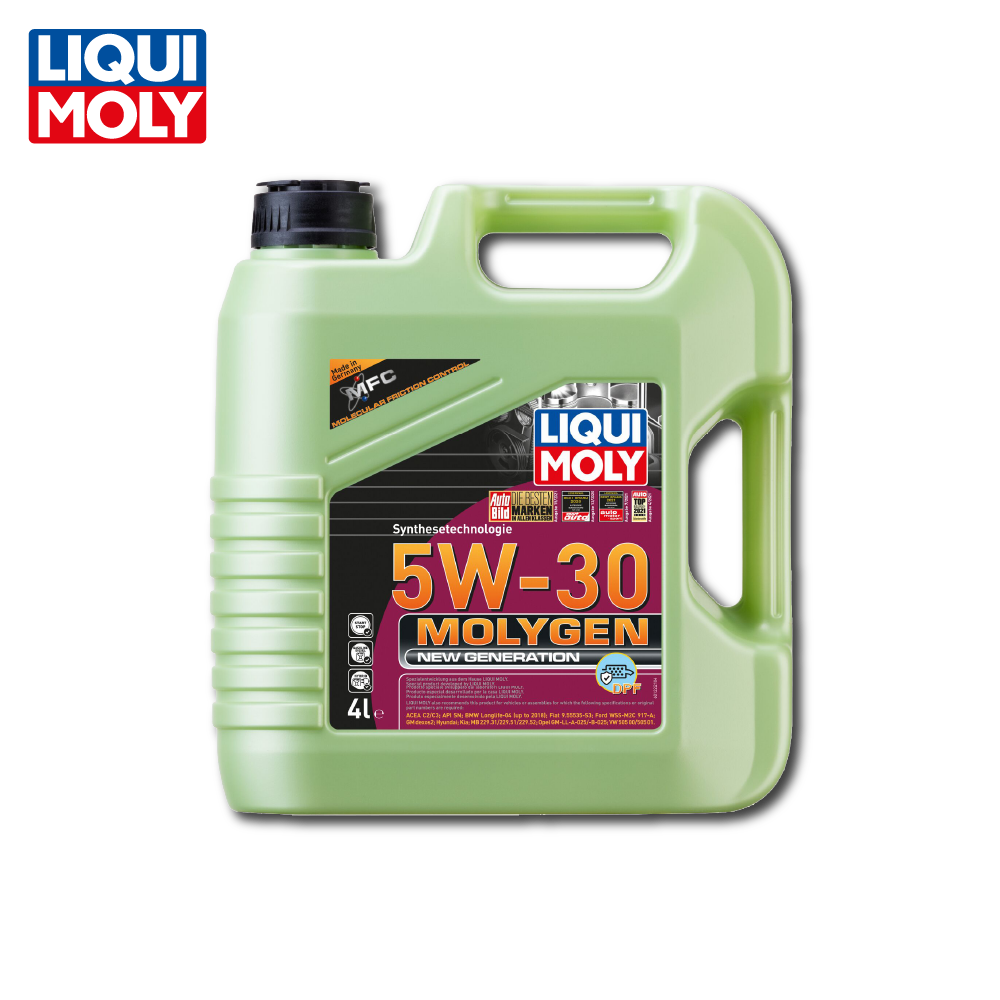Need to top off or replace the coolant in your Audi A3? This guide strips away the jargon to provide you with clear, no-nonsense advice on the best coolant for Audi A3, how to maintain it, and what to consider for your vehicle’s health. Let’s dive into what you should know to keep your Audi cool under pressure.
Shop for the products in this blog
Key Takeaways
Using the correct coolant for the Audi A3 is crucial for protecting the engine against extreme temperatures and preventing corrosion, with a recommended operating range between -40°C and +125°C.
Audi A3 coolant specifications such as VAG TL-774 G/J should be adhered to for compatibility and optimal performance, with newer standards like G13 maintaining backward compatibility with older formulations.
Regular checks and maintenance of coolant levels are necessary, and owner’s manuals provide the schedule for topping up or changing the coolant, with OEM quality coolants preferred for guaranteeing engine performance and longevity.
Selecting the Right Coolant for Your Audi A3

The engine coolant for your Audi A3 is not just a fluid; it’s a shield that safeguards your engine against the extremities of temperature, from the frosty whispers of winter to the scorching breath of summer. Imagine your vehicle’s engine as a marathon runner; just as a runner needs to maintain their body temperature to avoid overheating or hypothermia, your Audi’s engine requires a coolant capable of handling a wide coolant temperature operating range, from the freezing point of -40°C to the blistering highs of +125°C.
Understanding Coolant Chemical Properties
Exploring the complex nature of engine coolant unveils a myriad of chemical properties, all designed to ensure the optimal operation of your Audi A3. Silicated organic additive technology, which includes silicates, is added to the coolant mix to fortify the engine against corrosion and enhance overall performance. But that’s not all; other additives in the coolant concoction play a pivotal role in preventing the dreaded buildup of scale and corrosion, which can spell disaster for the long-term health of your engine.
Importance of OEM Quality Coolant
Regarding your Audi A3, selecting any coolant isn’t advisable. Sidestep potential pitfalls by embracing original equipment manufacturer quality coolants that are tailored to meet the unique needs of your Audi’s engine. The meticulous specifications set forth by car manufacturers often eclipse those of less expensive alternatives, ensuring your engine runs as smoothly as the day it left the showroom floor.
Additionally, the packaging of the coolant is not merely a container, it’s an invaluable source of guidelines, including clear labels, usage instructions, and essential safety precautions to prevent accidental ingestion.
Decoding Audi A3 Coolant Specifications

Deciphering the cryptic language of Audi A3 coolant specifications is the key to prolonging your engine’s lifespan. The alphabet soup of specifications like VAG TL-774 G/J, which aligns with the G12 coolant types, may seem daunting, but it’s crucial for ensuring compatibility and peak engine performance. Dive deeper and you’ll find that a symphony of standards such as SAE J1034, ASTM D3306, and ASTM D4985 harmonize to form the recommended coolant specifications for your Audi A3.
And while the evolution of coolant types has brought us to the advanced G13 standard, rest assured it maintains a backward compatibility waltz with predecessors like G12, G12+, and G12++.
How to Check and Maintain Coolant Levels
Frequent inspections of the coolant level in your Audi A3’s reservoir equate to a routine medical check-up for your vehicle. Before attempting to peer into the coolant reservoir, allow the engine to cool or use a thick cloth to prevent burns, as patience here is a virtue that ensures your safety.
Pop the hood after opening the driver’s door and locate the coolant reservoir on the passenger side of the engine compartment. The coolant levels should play between the lines of maximum and minimum, staying within these bounds when cold and perhaps flirting slightly above the maximum when warm.
When to Top Up or Change Your Coolant
The schedule for replenishing or replacing your Audi A3’s coolant isn’t rigid. With the advent of Organic Acid Technology (OAT) coolants, the lifespan of your coolant extends significantly, allowing for more time between each coolant rendezvous. However, the occasional top-up once or twice a year keeps things running smoothly, although ideally, your coolant should maintain its level without the need for frequent additions.
Yet, if you find yourself often reaching for the coolant bottle, it may be a red flag signaling a leak in the cooling system or, worse, an internal engine issue that beckons immediate attention. It’s crucial to bottle observe in such situations to prevent further damage.
Comprehensive Comparison of Audi A3 Coolant Brands

The search for the perfect engine coolant for your Audi A3 may guide you through a labyrinth of brands, each with their own enticing promises. Yet, sticking to manufacturer recommendation is non-negotiable for maintaining the heart of your vehicle. Pentosin, for instance, shines as a beacon of compatibility, aligning with the G12++ additive specification and available at your local NAPA store.
And the coolant market is abuzz with other stalwarts like MANNOL, FEBI BILSTEIN, KRAFT, K2, VAICO, and Man Diesel Turbo SE, each brandishing their own merits for keeping your Audi A3’s engine in pristine condition, adhering to vehicle manufacturer specifications.
The Consequences of Ignoring Low Coolant Warnings
Operating with low coolant levels is akin to traversing a tightrope without any safety measures. Your Audi A3’s engine could succumb to the wrath of overheating, leading to catastrophic failure if not tended to promptly. Ignoring the silent cries of your coolant reservoir could lead to an insidious buildup of sludge and deposits, culminating in blockages that choke the life out of your coolant system.
And the sting of costly repairs looms large, as damage to the engine and cooling system components from improper coolant use or mix can quickly add up.
Practical Tips for Mixing and Using Coolant
Blending antifreeze for your Audi A3 involves more than just pouring and neglecting; it’s a precise art. The secret ingredient? Distilled water, which when coupled with antifreeze, prevents the formation of mineral deposits that could lead to corrosion. Whether you opt for a pre-mixed 50/50 solution or take the DIY route by combining concentrated coolant with distilled water, ensuring you adhere to the golden ratio safeguards your engine’s health.
And while you’re selecting your coolant, consider the packing type, as it can affect the longevity and efficiency of the fluid inside, with options ranging from plastic’s lightweight convenience to metal’s robust defense against heat and UV rays. Additionally, canister oil containers offer an alternative solution for storage and transport. Don’t forget to take into account the quantity packing type and the typical service life of the coolant to ensure you have the right amount for your needs.
DIY: How to Flush and Refill Your Audi A3 Coolant System
Get ready to revitalize your Audi A3’s coolant system with a comprehensive flush and refill. Begin this ritual only when the engine has cooled its jets to a complete rest, ensuring your safety and a smooth process.
Elevate your vehicle using ramps or jacks to gracefully access the coolant drain, which can be found playing hide and seek just behind the bumper on the passenger side. Remember to unscrew the coolant reservoir cap to invite air into the system, allowing the old coolant to drain out in a swift fashion. Be sure to have a container ready to catch the old coolant, which typically measures up to about 5 liters in volume.
Cost Considerations: Finding the Best Prices for Audi A3 Coolant
The pursuit of top-tier engine coolant for your Audi A3 doesn’t necessitate a severe financial strain. With a price range that stretches from the modest £3 to the more premium £31, the market offers a spectrum based on manufacturer and specifications. Bulk buying can be kind to your budget, with discounts that grow with each additional bottle, ensuring you’re never left high and dry.
And if you’re an online shopper, retailers like Halfords roll out the red carpet with free delivery on orders surpassing £20 or the convenience of Click and Collect at your local store. Be mindful of your Audi’s cooling system capacity when choosing the package size, as it’s a delicate balance between having enough coolant on hand and avoiding excess waste.
Summary
As we’ve journeyed through the intricate dance of maintaining your Audi A3’s coolant system, one truth stands clear: the right coolant is paramount. From understanding chemical properties to decoding specifications, and from comparing brands to mastering DIY maintenance, every step is crucial in protecting your vehicle’s performance. Embrace the wisdom of regular checks, heed the warnings of your coolant levels, and your Audi A3 will reward you with a symphony of smooth operations for miles to come.
Frequently Asked Questions
What is the best type of coolant for my Audi A3?
The best coolant for your Audi A3 is one that meets the VAG TL-774 G/J specification, commonly referred to as G12 or G13 type coolants. Always ensure compatibility with your specific model.
How often should I check my Audi A3’s coolant level?
You should check your Audi A3’s coolant level ideally every time you fill up your fuel tank or at least once a month to ensure safe operation. Checking regularly will help maintain the vehicle’s safe operation.
Can I use tap water to mix with my antifreeze?
No, it’s best to use distilled water instead of tap water to avoid potential corrosion and damage to your engine.
How do I know when to change the coolant in my Audi A3?
If you frequently need to top up the coolant in your Audi A3 or notice signs of system leakage or contamination, it may be time to change the coolant. Regular maintenance is key to keeping your car’s cooling system in top condition.
Are there any cost-effective tips for purchasing Audi A3 coolant?
Consider purchasing coolant in larger quantities to take advantage of discounts, and look for retailers offering free delivery or Click and Collect options to save money.


